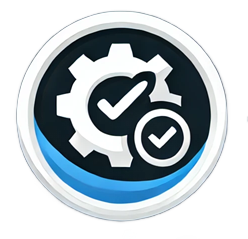
Intro: Automation doesn’t need to be overcomplicated or locked behind massive frameworks. With Playwright, you can start testing like a pro—without setting up CI/CD or coding from scratch. In this post, we’ll show you how to leverage Playwright to write powerful, stable tests that work across browsers and how you can practice all of this using the QA Testing Playground we built for real-world scenarios.
Why Choose Playwright?
Playwright is a modern end-to-end testing framework built by Microsoft. It supports Chromium, Firefox, and WebKit out of the box and handles flaky test behavior better than most tools by default.
Key advantages:
- Works across all major browsers
- Handles iframes, shadow DOM, and complex interactions gracefully
- Has smart auto-waiting to reduce flakiness
- Includes features like tracing, video recording, and API testing
- JavaScript and TypeScript support out of the box
Compared to Cypress or Selenium, Playwright gives more flexibility—especially for projects where cross-browser and parallel execution are crucial.
Getting Started (Without the CI/CD Overhead)
All you need is Node.js. That’s it.
npm install -D @playwright/test
npx playwright installTo run tests:
npx playwright testWant to explore your tests visually?
npx playwright test --uiUse Our QA Testing Playground
We built playground.qajourney.net to give testers a hands-on way to learn real automation.
Each test scenario is based on real-world challenges:
- Dynamic DOMs
- Alerts and prompts
- Iframes
- Network delays
- Forms with validation
- Broken links and 404 handling
You can automate all of them using Playwright without needing a real dev environment.
Example Test Coverage
These tests are already available in our GitHub repo:
form-validation.spec.ts: Tests input errors and valid submissionsnetwork-delay.spec.ts: Waits for async data to appeariframe.spec.ts: Interacts with elements inside an iframealerts.spec.ts: Handles JavaScript alertsbroken-links.spec.ts: Checks for 404saccessibility.spec.ts: Usesaxe-playwrightto run basic a11y scans
All of these run on the Playground with no configuration needed.
What Makes Playwright Powerful?
- Cross-browser support: Run your test on Firefox, WebKit, or Chrome.
- Auto-waiting: No more fragile sleeps or
.wait()hacks. - Built-in tracing: Record full test runs with screenshots and video.
- Multi-context testing: Simulate multiple users or devices.
- Advanced selectors: Supports role-based locators, shadow DOM, and more.
Ready to Try?
- Fork the GitHub repo
- Open
/playwright/tests/ - Run the tests on your machine
- Explore and build your own test ideas
Need inspiration? Try combining selectors, chaining assertions, or creating test data through APIs.
Final Thoughts
Playwright is powerful but simple enough for beginners to pick up. You don’t need CI/CD, you don’t need a fancy framework—you just need a good testing mindset.
This is part of our QAJourney Automation Lab, where we help testers transition from manual to technical with purpose-built tools, articles, and learning sandboxes.
🔗 Resources
Next up: We’ll be covering essential QA browser extensions and VSCode plugins to make your scripting life easier—even if you’re still doing manual testing.


1 thought on “Automate Like a Pro: Real-World QA Testing with Playwright (No CI/CD Required)”